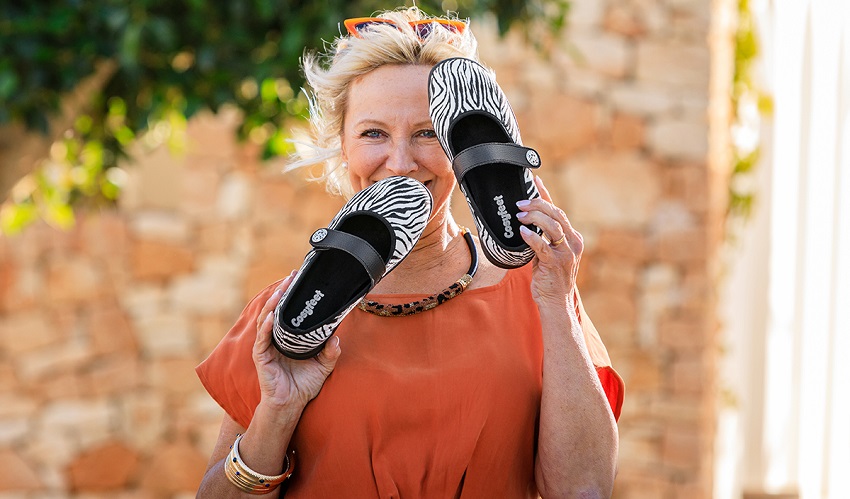The College of Podiatry is the Professional Body and Trade Union for registered podiatrists. They represent around 10,000 private practitioners, NHS podiatrists, students and retired members. They sent a review team to the CosyFeet headquarters in Somerset on the 10th April 2019. The visiting team consisted of:
- Prof Paul Chadwick PhD – Clinical Director at The College of Podiatry
- Krishna Gohil – Podiatry Project Officer at The College of Podiatry, Advanced Podiatrist (Diabetes) Northampton
- Martin Nunn – Council Member at The College of Podiatry, Advanced Podiatrist (Biomechanics) Bolton NHS Foundation
The panel used published research and guidelines to formulate a standardised approach to assess which Cosyfeet styles could be considered appropriate shoes for diabetics.
It is worth noting that about 70% of people with diabetes are considered ‘low risk’ and providing they follow their GP’s advice, can wear most footwear quite happily. The panel’s advice was geared towards those at higher risk who need to take greater care over the footwear choices they make.
The panel examined each footwear style in turn and subsequently submitted a report. Based on their guidance, CosyFeet have now marked a number of styles as diabetic-friendly.
Look out for the logo.
Diabetic-friendly style Koryl
Diabetic-friendly style Ken
Choosing well-fitting shoes, maintaining good control of blood glucose and checking your feet regularly helps to reduce the risk of foot complications amongst people with diabetes. It’s important to seek the advice of a podiatrist or health professional if you aren’t sure whether your wide fitting shoes are suitable for you.
Run your fingers inside any item before wearing, checking for anything that may harm. After buying new footwear, wear it for 30 minutes to 1 hour at first, then inspect your feet for pressure marks or irritation. A hand mirror is useful so you can examine your whole foot. Gradually build up the wearing time.
Click here for foot health advice from The College of Podiatry.





